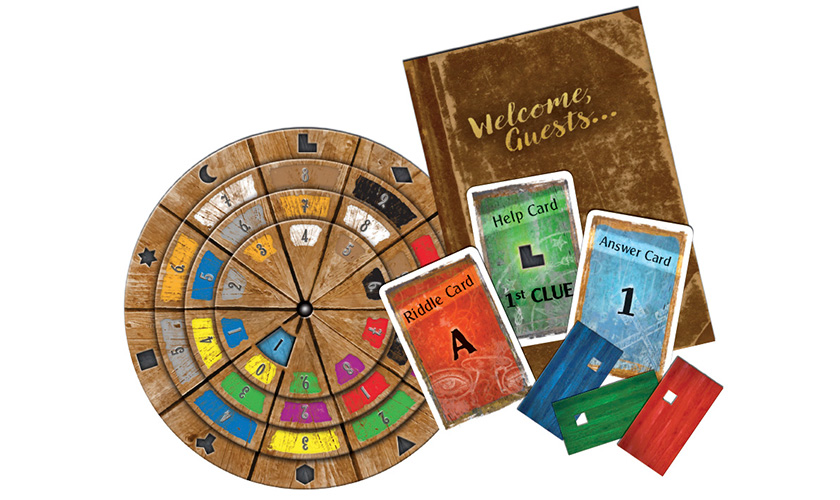Challengers is one of the hottest new games of 2023, and snagged a Kennerspiel des Jahres nomination already (along with Iki and Planet Unknown). I’ve played it a bunch. It sucks.
Challengers does two extremely annoying things. One, the biggest flaw in the game, is that it is deeply asymmetrical in a way that can leave certain players at a huge disadvantage. It’s a small-deck deckbuilding game, but you only get a selection of six cards in each round and can choose one or two. If you don’t like the cards, you can refresh the supply one time, but that’s it. Since those sextets are drawn randomly from much larger decks, you can easily end up seeing a strictly inferior set of cards to those your opponents see. That alone would be enough to make a game suck.
The other is that its core mechanics are totally unoriginal. It’s a flag battle, where players flip cards from their decks to try to match or top the defense value of their opponent’s last played card, and regain control of the flag. A battle ends when one player has to draw and can’t, or when one player has to discard but already has filled all six spots on their bench (one spot per unique card type). This is Magic: the Gathering stuff and every game that it inspired or that just flat-out copied it. It’s also a game where most of the cards have unique powers, which just reeks of plans for future expansions, and also increases the learning curve for new players because you have to learn what’s in all the decks. Some games do this well, like Wingspan. Challengers does not.
In Challengers, up to 8 players will build their decks, adding one or two cards in each round and removing as many cards as they wish, then doing battle with one opponent. Each battle’s winner gets a trophy worth some random amount of fans, with that amount increasing as the rounds progress. The players with the most fans after all seven rounds play each other for the championship. Since the battles take place simultaneously, the game doesn’t take any longer with 8 players than it would with 2, in theory, at least.
The cards you can add progress in strength and special powers, with three levels, A, B, and C. In the first two rounds, you can only add from the A deck; by the seventh round, you can only add from the C deck; and in some intervening rounds you might have a choice of two decks. There are also multiple sets (colors) in each deck, which can matter for cards that only work on cards of the same set, or that change power based on how many different sets are on your bench. There are some cards that let you remove cards that are already on your bench, which in my experience are the most valuable and coveted cards – but you can play an entire game and never have a chance to add a single one of these (Butler, Sorceror, Vacuum Cleaner, etc.). Some cards also let you gain additional fans regardless of whether you won that match, even giving you fans just for selecting the card.
There’s nothing terribly new here, and it feels more than anything like a game to make money rather than a game you’d want to play again and again. The asymmetry of it is just too extreme for me – the game is fundamentally broken. If I want extreme randomness, I’m pretty sure there’s a dusty copy of Sorry! somewhere in the basement.
As for the Kennerspiel, I’ve played this, and I’ve played Iki, but have only seen Planet Unknown, which I think is out of print at the moment. Iki is fine, although the game itself is several years old and just made it to Europe within the last twelve months, so it was Spiel eligible without actually being new (like someone getting a Best New Artist Grammy nomination for their fifth album). Planet Unknown looks fantastic, and I’m still hoping to snag a copy somewhere. The slate of nominees for the Kennerspiel and the regular Spiel just contributed to my general sense that the award has become too hit or miss for me to worry about. The 2022 winners, Cascadia (Spiel) and Living Forest (Kennerspiel), were fantastic and both worthy of the honor. The previous year’s Spiel winner was MicroMacro Crime City, a perfectly fine game that didn’t break that much new ground and felt like a larger version of something I might have seen in GAMES magazine as a kid. In 2020, the Spiel went to Pictures, a goofy party game; and the Kennerspiel went to The Crew, an interesting cooperative trick-taking game that wasn’t good enough to earn the award or complex enough to win the “expert’s game” honor. And so on – they get some right, but they might be batting around .500. The award still matters a ton for sales and marketing, so I’m not dismissing or ignoring it, but I don’t think I’m using the same criteria they are when it comes to thinking about games.



